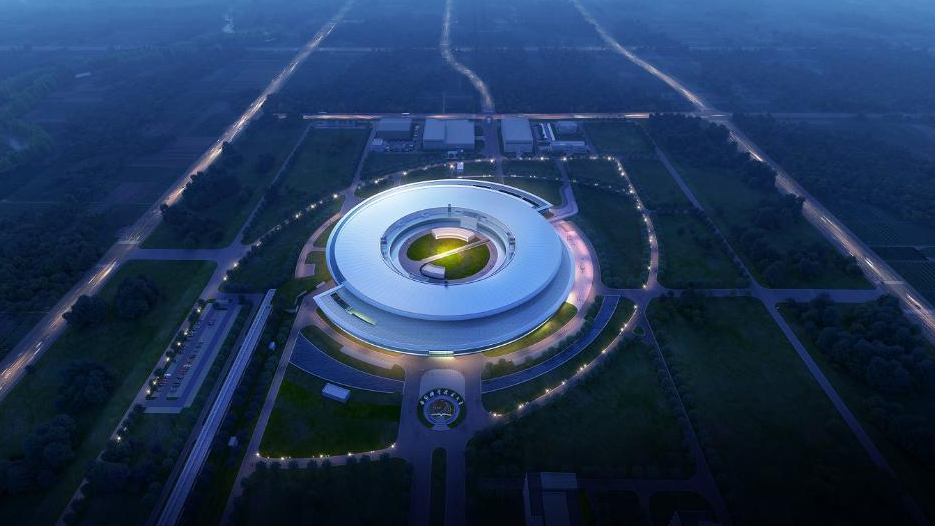
A digital rendering of the Hefei Advanced Light Facility in Hefei City, east China's Anhui Province. /National Synchrotron Radiation Laboratory
A digital rendering of the Hefei Advanced Light Facility in Hefei City, east China's Anhui Province. /National Synchrotron Radiation Laboratory
Construction of a fourth-generation synchrotron radiation facility started in Hefei City, east China's Anhui Province on Wednesday.
Synchrotron radiation refers to the electromagnetic radiation, which occurs when charged particles are accelerated in a curved path or orbit.
It resembles turning an umbrella quickly in the rain, leading to clusters of water droplets flying out along the tangential direction of the edge of the umbrella, according to a People's Daily report that cites Dong Yuhui, an official at the Institute of High Energy under the Chinese Academy of Sciences (CAS).
A synchrotron radiation light source is a large tool that produces intense beams of light with higher energy and stronger brightness.
The Hefei Advanced Light Facility (HALF) will be an advanced fourth-generation low-energy diffraction limited synchrotron radiation light source, according to its developer, the National Synchrotron Radiation Laboratory under the University of Science and Technology of China.
The brightness of the soft X-rays generated by the equipment will be more than 100 times higher than that of third-generation light sources.
It is expected to allow the development of experimental methods with higher precision and sensitivity in dimensions such as space, time and energy, and play a key role in fields like physics, electronics, information, chemistry and chemical engineering.
The facility is expected to be completed in 2027, according to its developer.
Development of synchrotron light sources in China
China constructed its first synchrotron radiation facility in Beijing and opened it to users in 1991.
Its light source covers energy from vacuum ultraviolet to hard X-ray, and supports various kinds of experimental techniques, such as X-ray topography, X-ray imaging, small angle X-ray scattering and diffuse X-ray scattering.
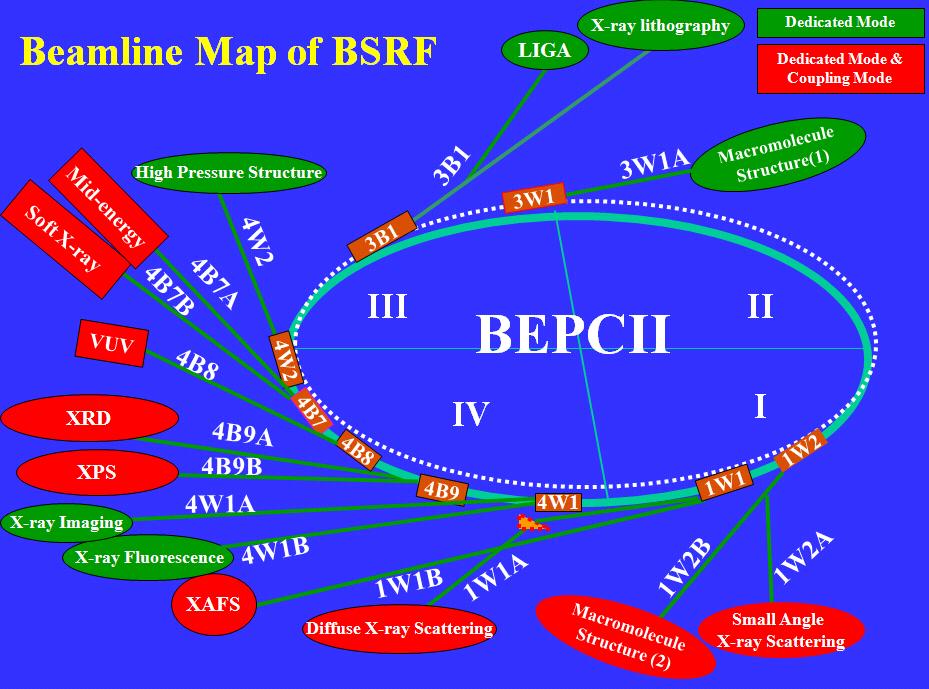
Schematic diagram of the Beijing Synchrotron Radiation Facility beamline and its experimental station. /Institute of High Energy Physics
Schematic diagram of the Beijing Synchrotron Radiation Facility beamline and its experimental station. /Institute of High Energy Physics
With the help of the Beijing Synchrotron Radiation Facility, Chinese scientists obtained the crystal structures of the severe acute respiratory syndrome coronavirus main protease in 2003, providing a structural basis for rational drug design, according to a study published in the journal Proceedings of the National Academy of Sciences in October 2003.
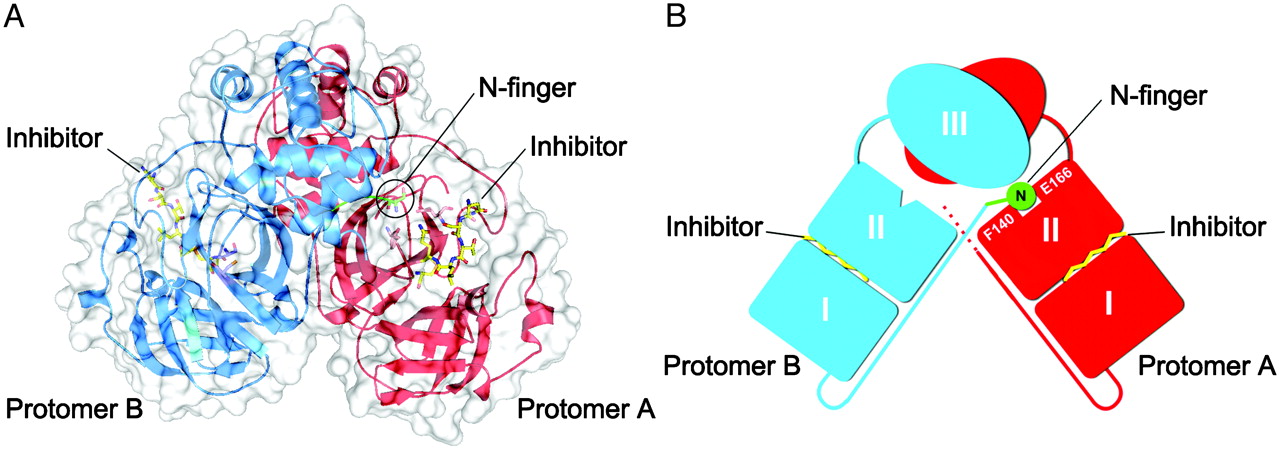
The picture shows the SARS-CoV main protease dimer structure complexed with a substrate-analogue hexapeptidyl CMK inhibitor published in the journal PNAS on October 29, 2003. /PNAS
The picture shows the SARS-CoV main protease dimer structure complexed with a substrate-analogue hexapeptidyl CMK inhibitor published in the journal PNAS on October 29, 2003. /PNAS
The country's second-generation light source, the Hefei Light Source, was also commissioned in 1991, in Hefei City, making it China's first dedicated synchrotron radiation facility.
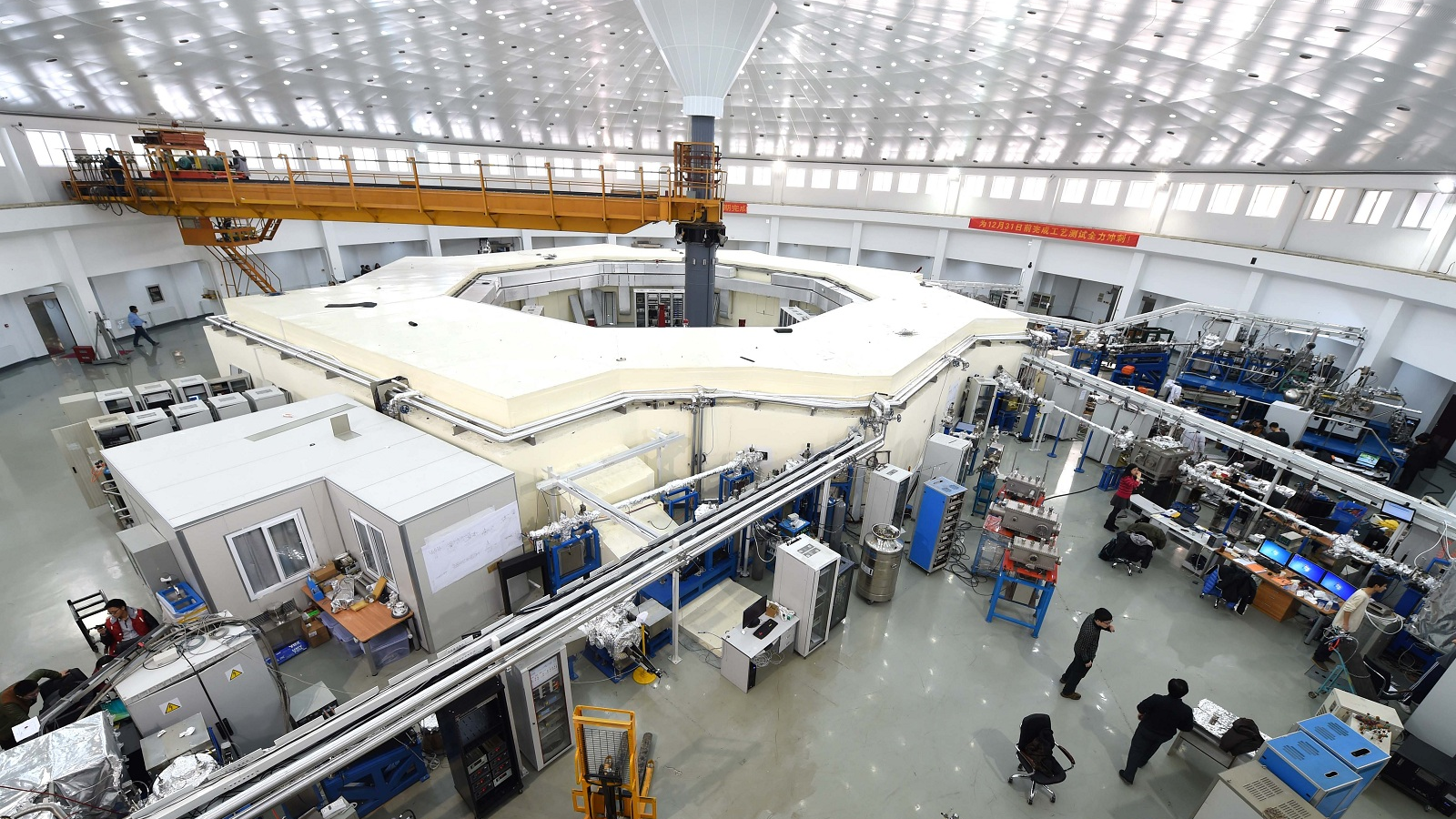
The Hefei Light Source in Hefei City, east China's Anhui Province. /CAS's Shanghai Advanced Research Institute
The Hefei Light Source in Hefei City, east China's Anhui Province. /CAS's Shanghai Advanced Research Institute
Commencing operation in 2009, the Shanghai Synchrotron Radiation Facility marked China's third generation radiation facility. By June 2022, there have been 27 beamlines with 39 end stations commissioned, according to CAS's Shanghai Advanced Research Institute.
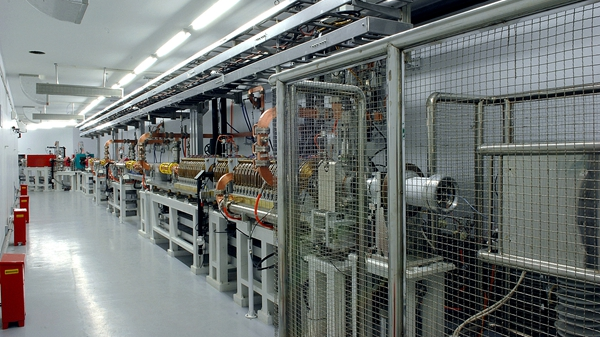
The 150 MeV electron linear accelerator at the Shanghai Synchrotron Radiation Facility. /CAS's Shanghai Advanced Research Institute
The 150 MeV electron linear accelerator at the Shanghai Synchrotron Radiation Facility. /CAS's Shanghai Advanced Research Institute
The fourth-generation of synchrotron radiation light sources, with increased brilliance, is based on diffraction-limited storage ring technology.
In China, two fourth-generation synchrotron radiation facilities are being constructed, one is the High Energy Photon Source (HEPS), and the other is the HALF.
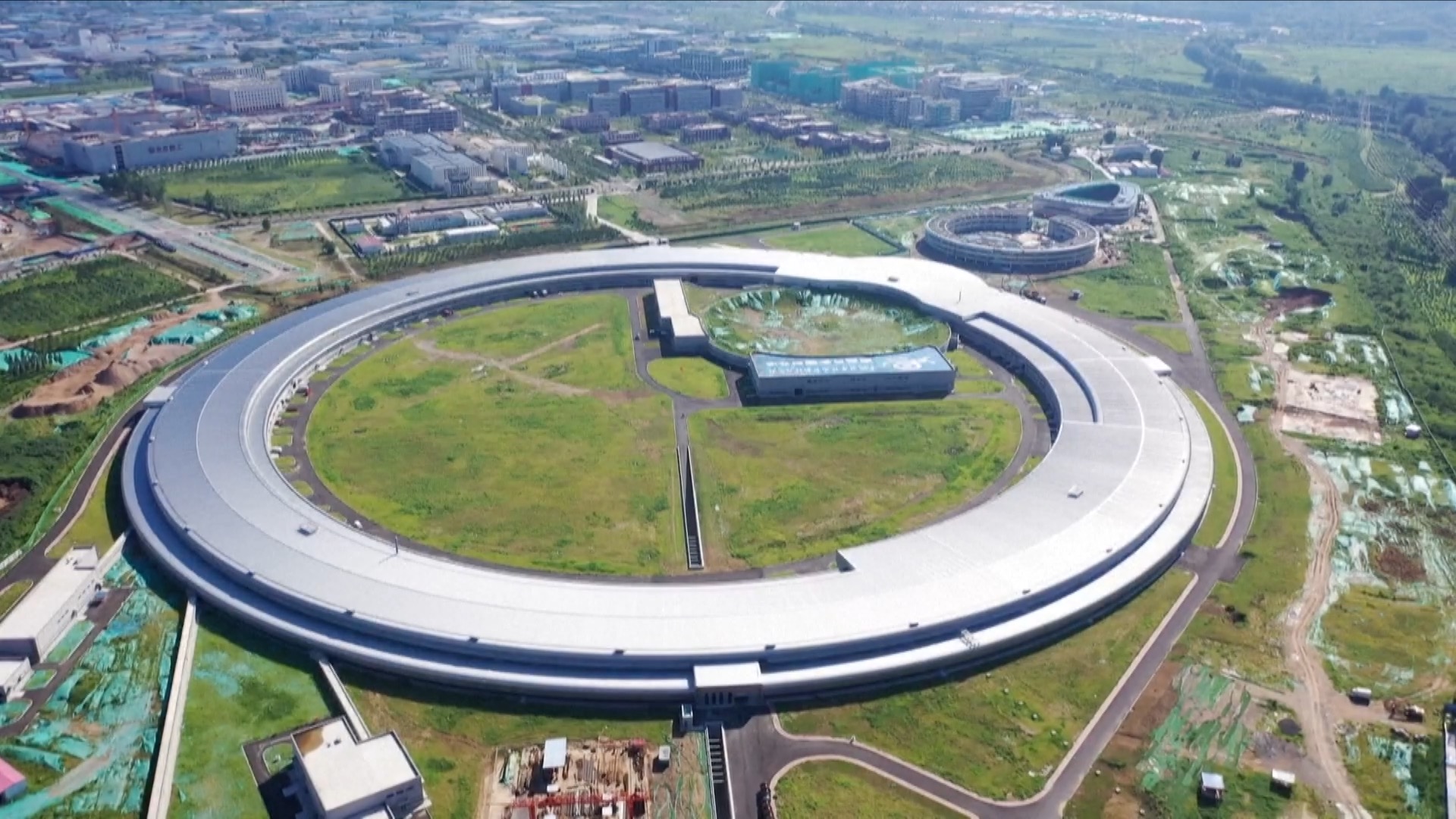
The linear accelerator of the HEPS accelerated its first electron beam in Huairou District, Beijing, China, on March 14, 2023. /CGTN
The linear accelerator of the HEPS accelerated its first electron beam in Huairou District, Beijing, China, on March 14, 2023. /CGTN
Located in Huairou District to the north of suburban Beijing, the supersized X-ray machine takes up an area of more than 20 soccer fields.
According to its developer, the Institute of High Energy Physics under CAS, its linear accelerator accelerated its first electron beam in March. Started in 2019, the facility is expected to be completed by the end of 2025.
Read more: China's fourth-generation light source facility installs new unit